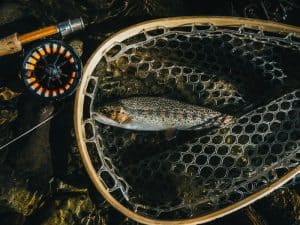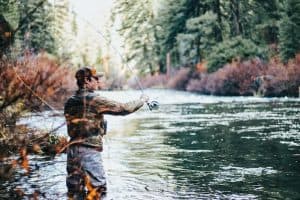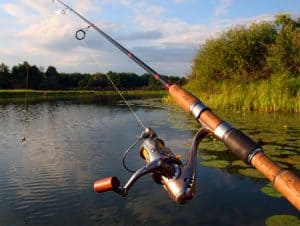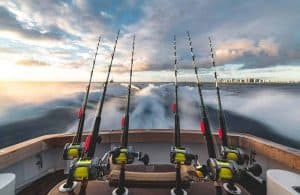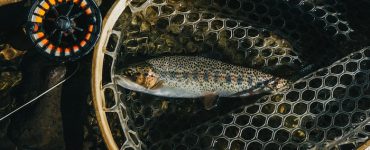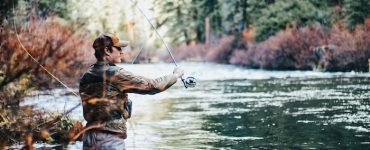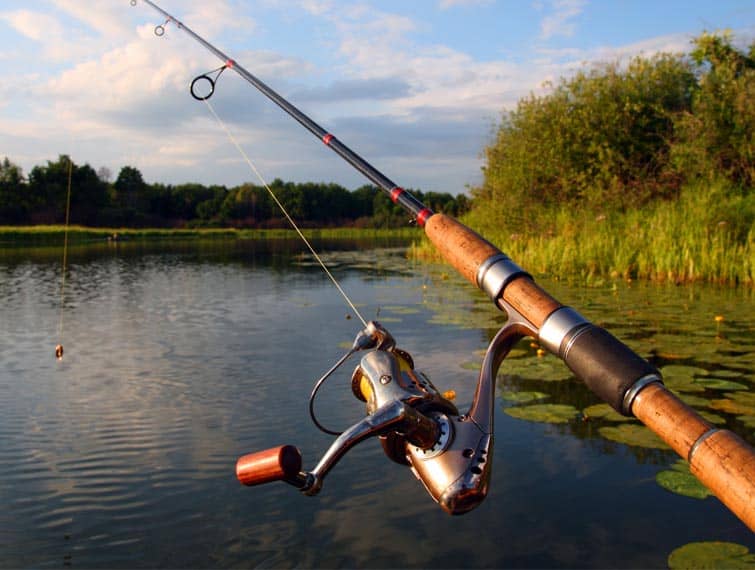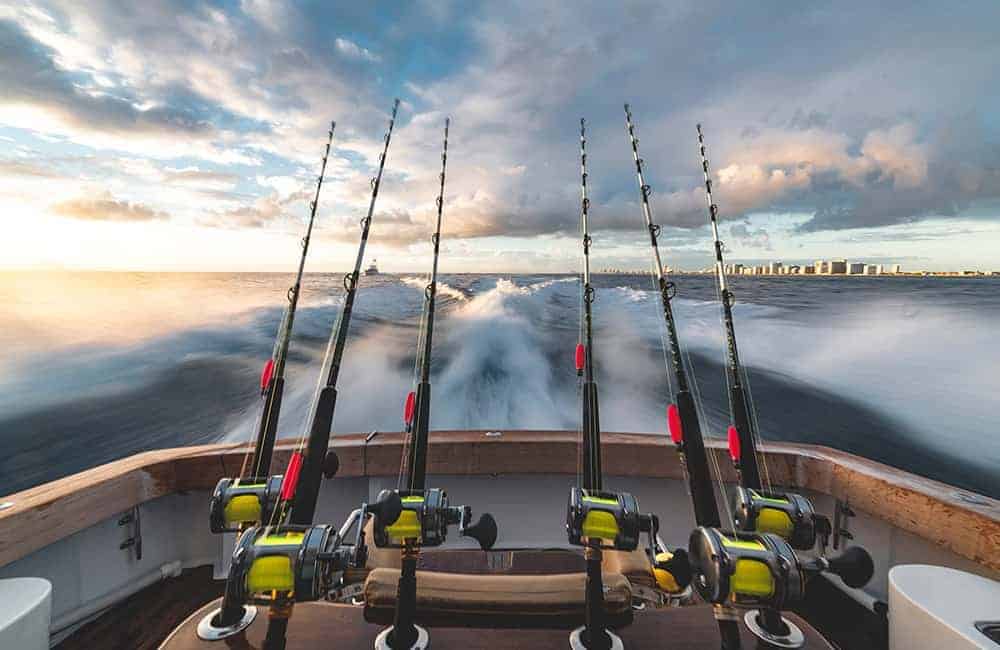Fly fishing is an amazing sport that has been around since ancient times. It is a way of life that requires patience, skill, and lots of practice. It may seem like a boring activity to some, but for people who enjoy nature, peace, and the silence it brings, it’s the perfect activity to relax and unwind.

There are many different types of flies used in fly fishing. Some are designed to attract certain species of fish while others are meant to imitate insects. The type of fly you use depends on the kind of fish you plan to catch.
If you are curious and intrigued by what fly fishing is, this article will help you understand the basics of this fishing method.
What is Fly fishing?
Fly Fishing is a sport that involves the use of an artificial fly to catch fish. The flies are usually made from feathers, fur or other natural materials and can be tied by hand or machine. They may also be attached with glue or wire. A person who fishes using this method is called a “fly fisher”.
Where did it originate and how did it flourish?
Although there have been no accurate records documenting its history, it is believed that the first recorded use of the fishing method was around the 2nd century by the Roman Claudius Aelianus.
In his book De Natura Animalium (On the Nature of Animals), he narrated fly fishing to be a new “Macedonian way” of catching fish. He talked about Macedonian natives using a peculiar fly that commonly hovered around rivers to bait the fish.
While the descriptions he used may not be the precise method, historians consider it to be the first accurate and indisputable reference to fly fishing. The fishing method flourished around the late 15th century, giving due credit to England elites who had popularized the term, “fly fishing” and its popularity as a sport.
The first records of English fly fishing were documented in the book The Treatyse of Fishing with an Angle. It mentioned several types of artificial flies along with instructions on how to create one, and the different flies to use each month.
Fly fishing vs. Regular Fishing
A lot of first time fly fishers don’t know, but being able to differentiate between fly fishing from regular fishing proves to be a controversial one. Some people think that fly fishing is more of a challenge than regular fishing, while some think it’s just another type of fishing method, and there’s nothing special about it.
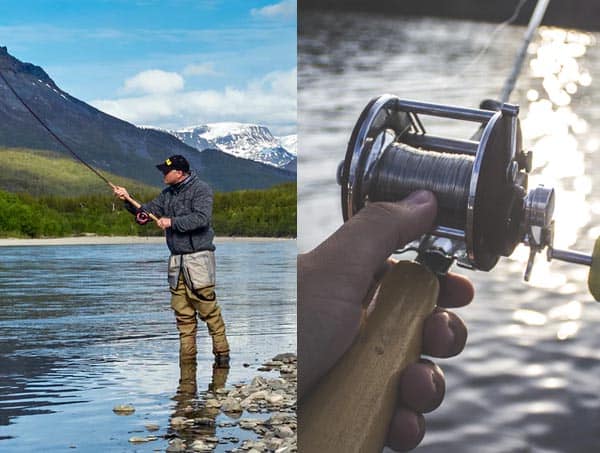
To help you differentiate fly fishing from the regular one, here are some noticeable differences:
As to fishing waters
Fly fishing is normally conducted on moving waters, while in regular fishing, its common fishing waters are still waters, and lesser on rivers.
Fun Outdoor Quiz
As to the fishing rod type
Fly fishing rods are lighter and are generally longer than spinning rods to accommodate the difference in use and style of fishing, which is false casting. Spinning rods, on the other hand, are tougher and heavier, and cast a monofilament line out deep into a body of water.
As to lures
Fly fishing uses artificial animal flies of various sizes, patterns, and colors to attract fishes, while the lures used in spin fishing are limitless. The common lures include worms, left-over toast, crankbaits, and more. With regular fishing, live bait is more often used than artificial ones.
Fly fishing vs. Bait Fishing
While some people see fly fishing and bait fishing as basically the same, the two fishing methods are different. Some of the most notable differences between the two fishing methods are:
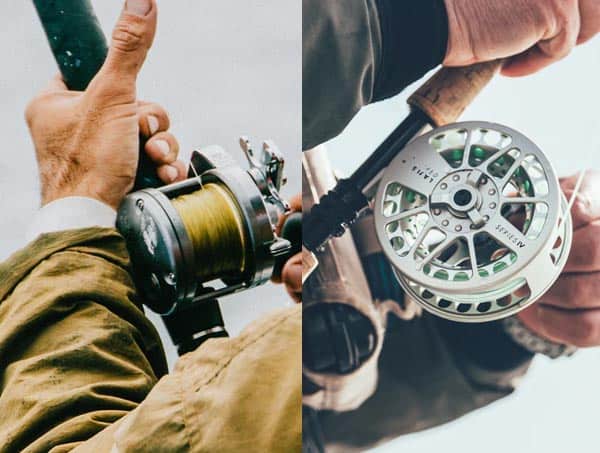
As to presentation
fly fishing allows for an upstream and stealthier presentation, while spin fishing works well for imitating baitfish, and is used in all water depths.
As to intent
The intent of using fly fishing is to fool a fish with any artificial fly. Most fly fishermen fly fish to challenge themselves with a more difficult form of fishing. On the other hand, the intent of using spin fishing is to catch a lot of fish. Spin fishing is more versatile when the intent is to fish different species.
What Are the Tools and Gear Used in Fly Fishing?
After getting acquainted with its origins and related literature documenting the first experiences of this method of fishing, it’s time to get familiar with the different tools and gear used in fly fishing.
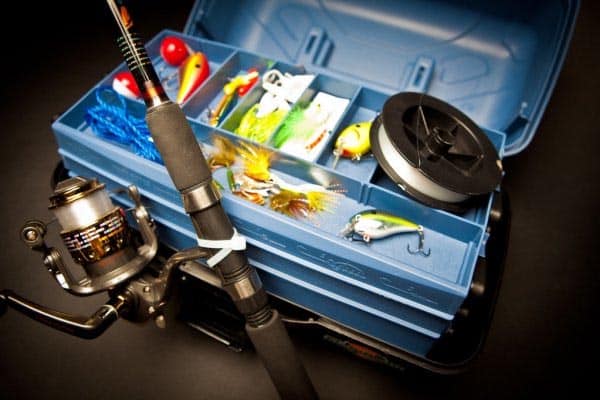
The first thing you should do before you start fly fishing is to find out the different fishing license requirements in the region you’re at. Considering that every state provides a different set of requirements, it is important to ask around about the license and the bodies of water you are allowed to fish in. It’s important you know all these things first so that you will not get into trouble with the law.
Once your license requirements are cleared, purchase quality fishing gear to use such as a fly rod, spool, and hemostat, flies, among others. But the most important gear setup to focus on are the rod, reel, and the fly line.
Fly Rod
Choosing good fly fishing rods is important as it determines what fish is suitable to catch.
If you are planning to catch small trout, make sure you get fishing rods within 1 to 4 wt., but if you are planning to catch regular-sized trout, you need to have a fly rod with a weight of 4-6 wt.
Fly Reel
Your fly reel should match your fly rod, especially if you are aiming to catch larger fishes. The larger the rod’s size, the more conscious you should be about your reel quality.
For fly rods with weights between 4 and 6 use a line of 50 yards, while for rods with a weight above 8, you need to use a backing line up to 150 to 300 yards.
Fishing Line
Fly lines that give weight to cast the artificial fly, are measured by fly line weight, and must suit your fly rod. It also comes in different types and different cross-sections to help you achieve different casting techniques.
However, if you are working within a budget, it might be best to borrow or rent good fishing equipment from a trusty fishing equipment rental store.
How does Fly Fishing Work?
Once you have all the gear equipment, it’s time to fly fish!
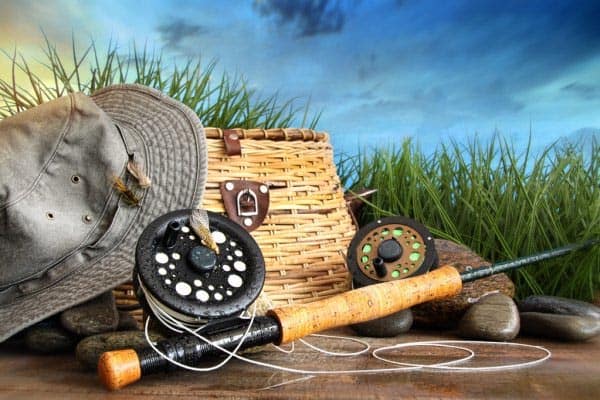
The toughest part about learning how to fly fish is learning how to cast. To be a good caster, you must familiarize yourself with the physics of fly casting. When casting, learn how to bend and to stroke the rod correctly since the common mistake by first-time fly fishers is moving their arm in exaggerated motions.
Instead of wildly wiggling your arms, they should move in a forward stroke, the same as when you hammer a nail to the wall. It is grasping the rod in a comfortable grip in a short, curved stroke, speeding up quickly, bending the rod, and unloading it to a sudden stop.
To properly fly cast, written tutorials might not be enough. If willing, watch fly casting videos or ask a professional about it, and practice as often as you can.
Aside from proper fly casting, it is also necessary to become acquainted with the life cycles of the different insects near the body of water you are intending to fly fish. Knowing what insects to use as bait during fly fishing for bass or trout will surely be helpful.
Lastly, learning how to read the water when fly fishing is crucial. Although it is something you will develop over time, you must learn to pay attention to the body of water and fish behavior.
Fly fishing and its advantages
You might feel intimidated by the fly fishing basics, but that should not be a reason not to pursue fly fishing as this hobby is known to offer numerous benefits!
Fly fishing is a hobby you want to get into if you want to improve your motor skills. With the minor acts of untangling a line, attaching hooks, it will help keep your hands become flexible and dexterous.
Another benefit of fly fishing is the gift of time to retreat, unwind, and improve your mental health. The slow and rhythmic movements in casting and reeling are proven to be therapeutic. Plus, you get to enjoy rhythmic nature sounds around you.
Fly fishing can even give you a brief wildlife crash course, as it will require you to research the area where you intend to fly fish.
Lastly, it is an inexpensive hobby. Although there are initial costs in the beginning because you have to purchase fly fishing gear and acquire a license, the hobby proves to be low maintenance as you don’t have to buy a new bait, and equipment upkeep is simple.
Conclusion
Although fly fishing may be daunting at first with the proper casting and reeling, that should not discourage you from learning more about it.
This fishing method takes time, so it is best to have a fun approach to take your mind off things. A part of fly fishing that is most enjoyable is being outdoors, so taking the time to learn this method shouldn’t be your primary concern if being in the wild is something you enjoy.
Slowly learn the ropes of this fishing method and don’t let the reward of catching the biggest trout be the bottom-line of learning it.
So grab your fly fishing rod, get on your fishing kayak, and fish on!


